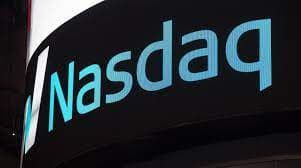The Sars-Cov-2 pandemic began in December 2019.
Starting in early October of that year, the Nasdaq 100 Index had begun to rise, and in fact continued to do so completely independently of the pandemic until February 2020.
During that time it rose by about 30%, from 7,700 points to 9,700 points.
Right at the end of February, news started to spread about a possible mass contagion also in the US, so that the index quickly started to fall. In the course of those days, and particularly in the first half of March, there was a real and sudden crash of 30%, with the value of the index dropping well below the level of October of the year before, falling from 9,700 points to 6,700 points in little more than two weeks.
To tell the truth, at that precise moment in time all financial markets collapsed, including the crypto market, so much so that the US government decided to launch a new phase of very expansive monetary policy, the most aggressive seen in recent years.
The Nasdaq 100 reacted almost immediately to that news, so much so that by early April it had returned to the levels of the previous October, and in early June it also returned to the highs of late February.
It is worth noting that these were all-time highs at the time, so when they were broken at the end of the first ten days of June, the Nasdaq 100 made new all-time highs at the height of the pandemic, even though the US health emergency had not yet reached its peak.
What is really strange is that in the following months the Nasdaq 100 made new all-time highs, even though the pandemic was going on and the health emergency in the US was at its worst.
Starting at 9,800 points on 8 June 2020, it first climbed to over 12,000 points in early September, then briefly retraced and resumed its run.
At the end of 2020, the index made new all-time highs near 13,000 points, which was then knocked down in the first ten days of January 2021.
The run continued until it touched 13,900 points in mid-February this year, followed by a short retracement, and a new rise to 15,700 points in September. After another brief retracement, the index started to rise again, reaching its current all-time high of 16,764 points on 22 November.
Taking the pre-covid peak (9,736 points on 19 February 2020) as a reference, this is an increase of 72% in just over a year and a half, at the height of the pandemic.

This increase has obviously not been generated at all by the performance of the US economy, nor by the government’s economic, financial or fiscal policies, but almost exclusively by the Fed’s ultra-expansionary monetary policy, which has pumped so many dollars into circulation on the financial markets that it has generated a massive inflation (or perhaps even hyperinflation) in the prices of assets traded on the financial markets.
It is enough to consider that the Fed’s balance sheet has grown from $4.2 trillion at the beginning of March 2020 to the current $8.6 trillion, i.e. more than 50% of the dollars created by the Fed in its entire history have been created in the last year and a half.
As a point of reference, the total value of all the world’s largest publicly traded companies is about $11 trillion, which is not much more than the Fed’s balance sheet alone, even though they include more than just US companies, and even though most of their shares do not belong to the US central bank.
Proportionally, the total value of the Nasdaq 100 increased less than the Fed’s balance sheet over the same period, precisely because the Fed does not in fact control the financial markets completely, and its impact on them is only partial, albeit decisive and very significant.
The only thing that justifies the pandemic performance of the Nasdaq is the huge amount of dollars created and distributed by the Fed on the financial markets during this period.
In light of this, there are those who argue that the dollar itself may be “in a bubble” at this time.
The post Nasdaq performance during the pandemic appeared first on The Cryptonomist.




















